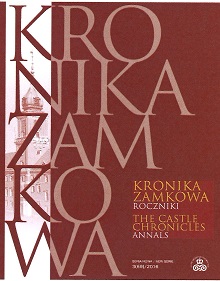Gody Tamizy z Renem : oprawa artystyczna londyńskich zaślubin Elżbiety Stuart i Fryderyka V (1613)
A Marriage of the Thames and the Rhine: The artistic Setting of the Wedding of Elizabeth Stuart and Friedrich V (1613)
Author(s): Agnieszka ŻukowskaSubject(s): Fine Arts / Performing Arts, History of Art
Published by: Arx Regia® Wydawnictwo Zamku Królewskiego w Warszawie – Muzeum
Keywords: Elizabeth Stuart; Friedrich V Wittelsbach; James I Stuart; court masque; English royal wedding in 1613; propaganda; ephemeral art
Summary/Abstract: The subject of this article, which draws on art history, theatre and literary studies, is the artistic setting for the wedding of Elizabeth Stuart and Friedrich V Wittelsbach, Elector Palatine of the Rhine. The various interpretations of equality, which reflected the conciliatory note which James I wanted to strike, had superiority over the message of the elite, ritualized court spectacles based on a fusion of illusion and reality (Thomas Campion’s The Lords’ Masque, George Chapman’s Memorable Masque and Francis Beaumont’s Inner Temple and Gray’s Inn Masque). The official portraits of the newly-weds, occasional verse, pamphlets intended for a wider general public, and large-scale spectacles in urban spaces (with firework displays and mock naval battles on the River Thames) were of a more adversarial and militaristic nature— they were based on romantic and chivalric themes and also often on anti-Habsburg and anti- Catholic sentiments. An analysis of the diverse sources, which often encompassed alchemy and astrology, the theory of neo-Platonic courtly love and emblematic imagery, enables us to put forward the hypothesis that one of the main objectives of these initiatives was to balance out the position of the newly-weds. On the one hand, there was an attempt to achieve a kind of ‘naturalization’ of Friedrich who was unknown to the English, and also to raise the status of the husband of the bride (who was being groomed as the successor of the deceased Prince Henry) and thereby to legitimize the dynastic alliance. On the other hand, however, there was a subtle emphasis on the bride’s leading position (a she sun) as the political reincarnation of Elizabeth I.
Journal: Kronika Zamkowa. Roczniki
- Issue Year: 3/2016
- Issue No: 3
- Page Range: 81-108
- Page Count: 28
- Language: Polish

